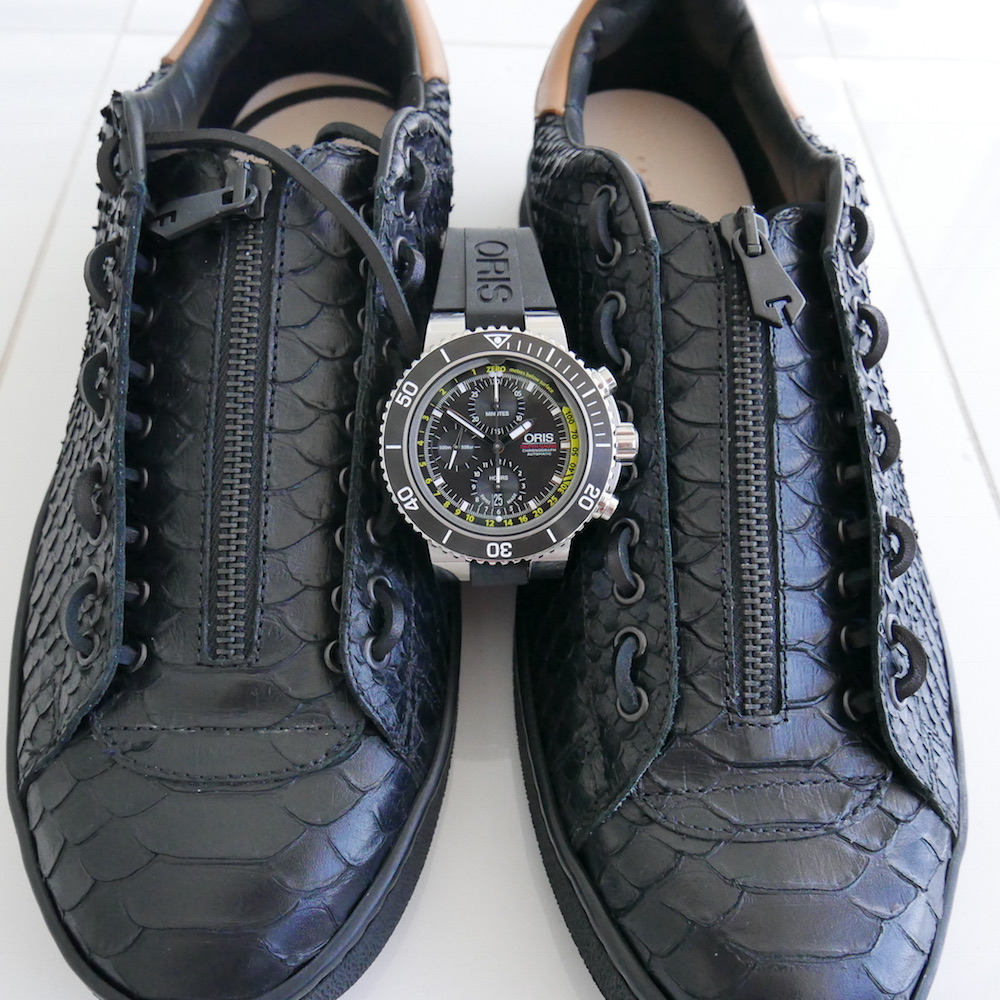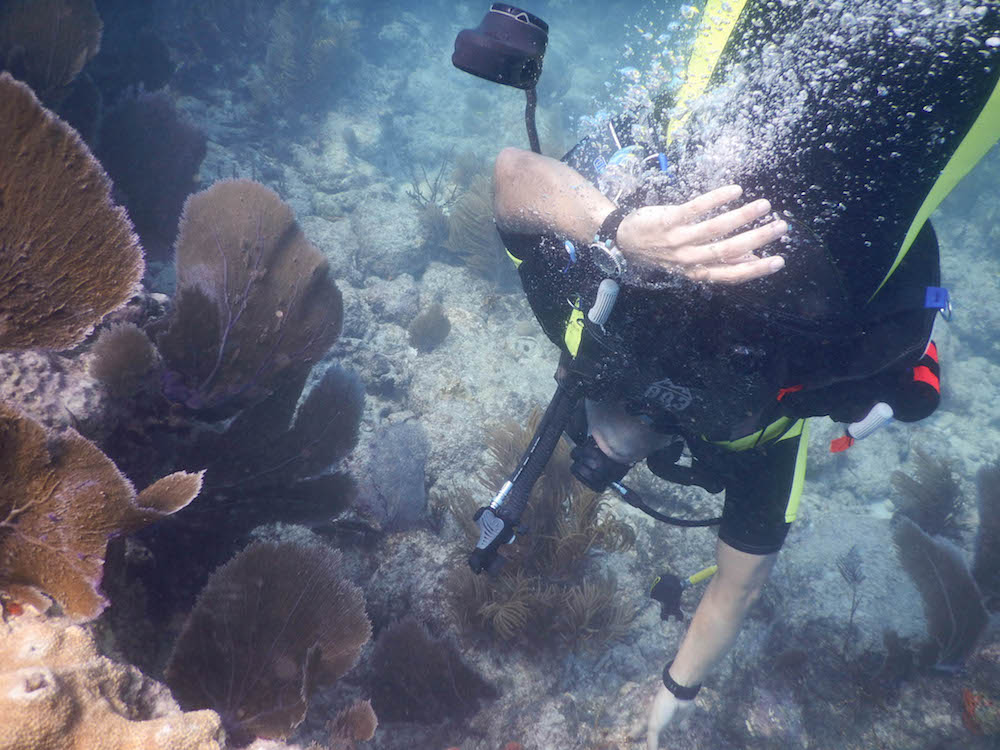
There are few activities that excite me as much as diving. So when Oris proposed to send me their Aquis Depth Gauge Chronograph reference 01 774 7708 4154-Set RS watch to accompany me on my annual diving trip (this year, in Key Largo, Florida) I could not wait to get in the water. What follows is a full review of this watch and my experience diving with it. I also include my thoughts using it as an everyday watch at the beach and during my vacation.
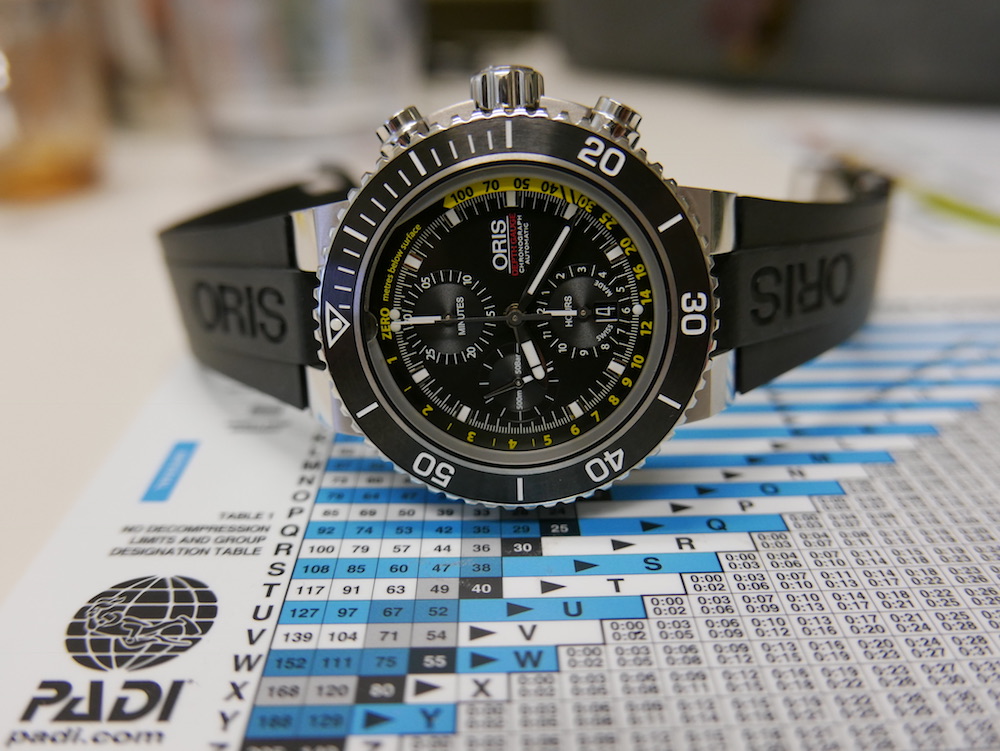
I’ve been diving now for just over five years, and during that time I have logged over 30 hours in the ocean, which includes class time to get my PADI advanced diver certification. So while the last few dives (four) in Key Largo were not the most time I’ve spent doing this activity, they have been the most memorable. Why? Well, read on.
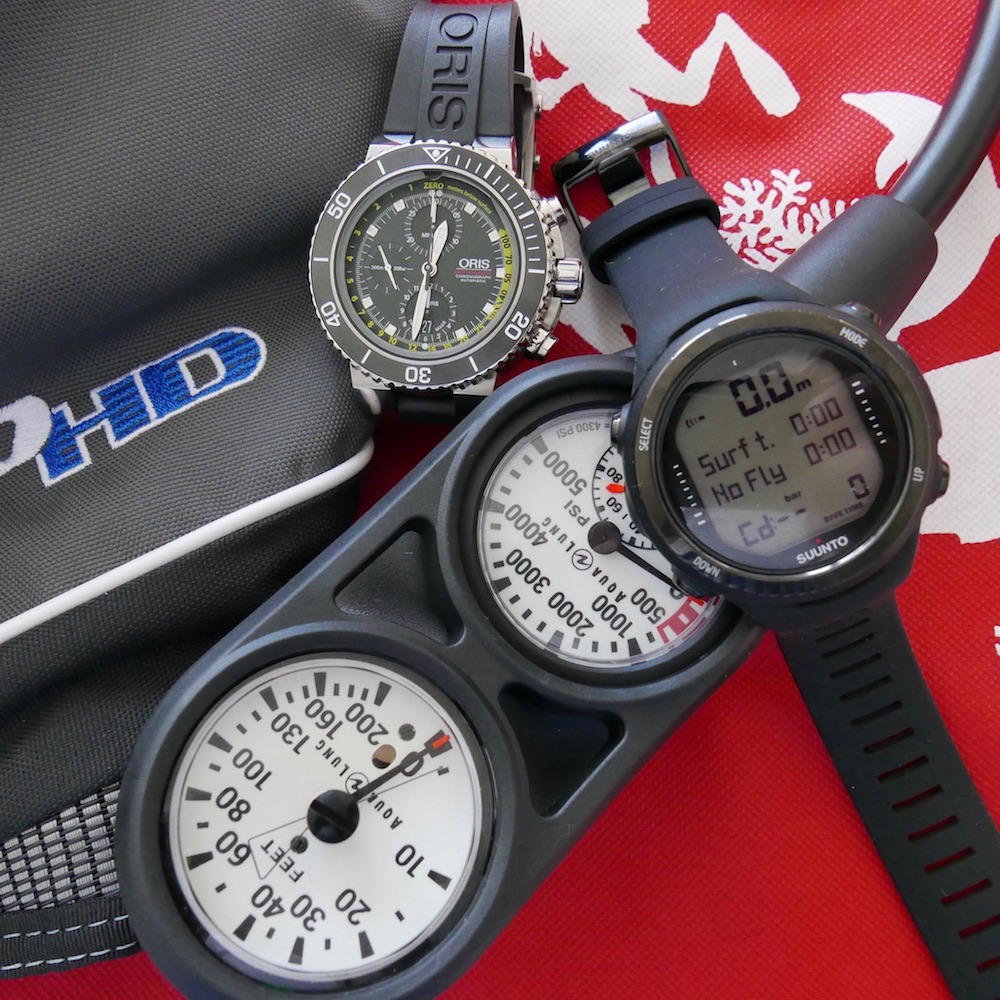
First – and perhaps a reason I enjoyed this time so much – is that it was the first time I dove with my own equipment. As a Christmas gift I finally decided to pull the trigger on a complete BCD set from Aqualung – yup, the same brand of Blancpain and Cousteau fame. In addition to the diving gear, I also decided to get my first dive computer. Yes, I know in the past a diving watch was the “diving computer,” but today we are wise to rely on (mainly) electronics that take much of the necessary calculation out of diving, and allow us to enjoy more of the view.
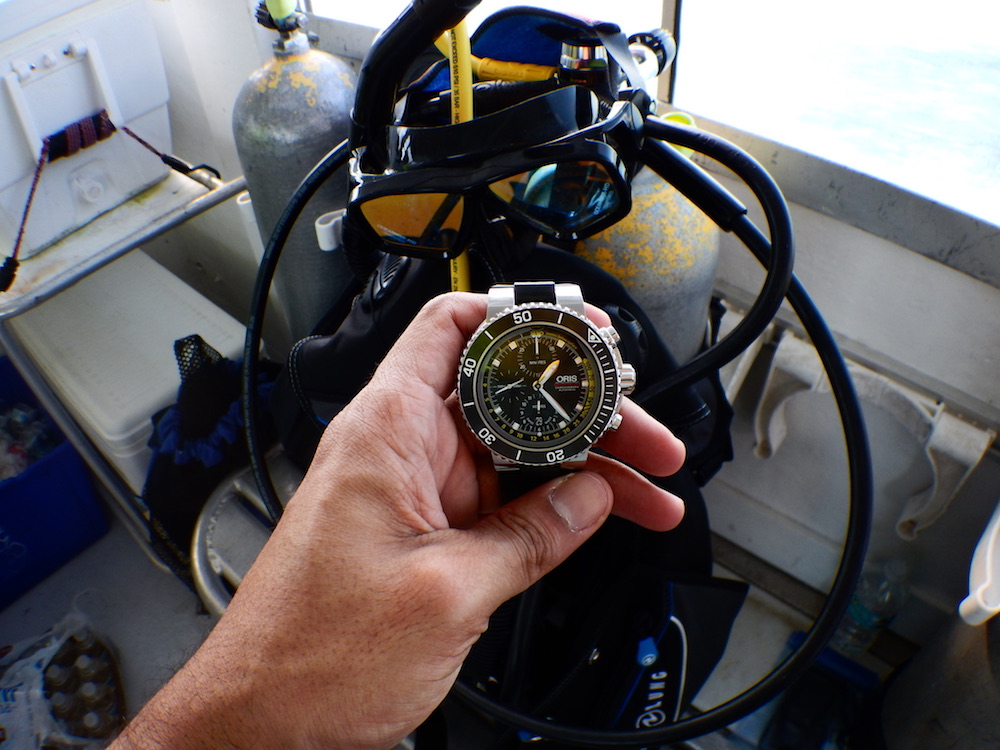
As a watch nerd, I had done a bit of research on this and concluded, based on online reviews and the feedback from the folks at the dive shop, that the Suunto d4i or d6i was the dive computer best suited for my needs. I opted for the d4i as the total bill was getting up there and the digital compass on the other model was not something I thought justified the difference.
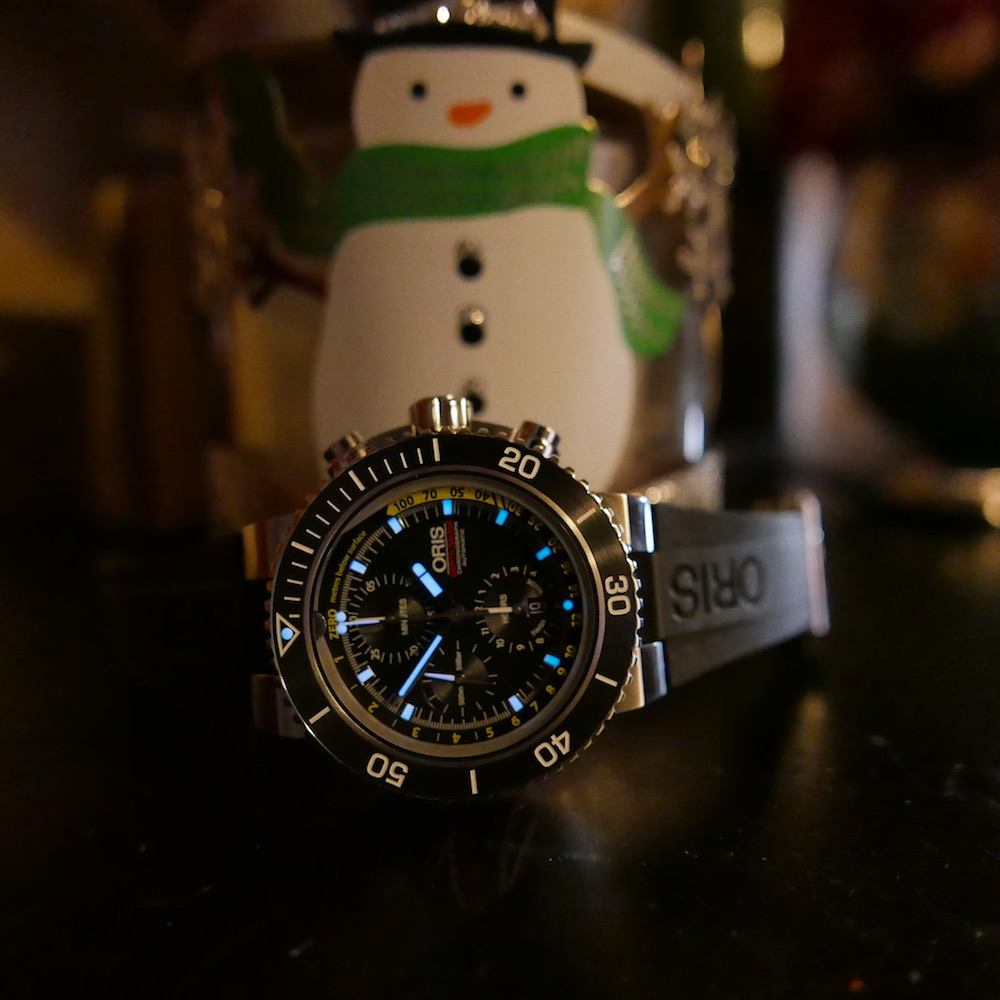
In any case, while my diving gear was all set and smelling new, I was also super excited to try out this analog depth gauge chronograph from Oris. Why would I be excited about an analog watch with 19th-century technology when I was being outfitted with the latest 21st-century diving gear? Well, besides the indescribable feeling that all watch geeks have when using these mechanical marvels, for me, it was also the added knowledge that I would be diving with a piece of kit that, while redundant, did not depend on any electronics, and that could very well save my life, but most importantly ensure peace of mind over the weekend in Key Largo. In a very real way, a mechanical watch serves as a useful backup for if your main dive computer goes out – it does happen to people.
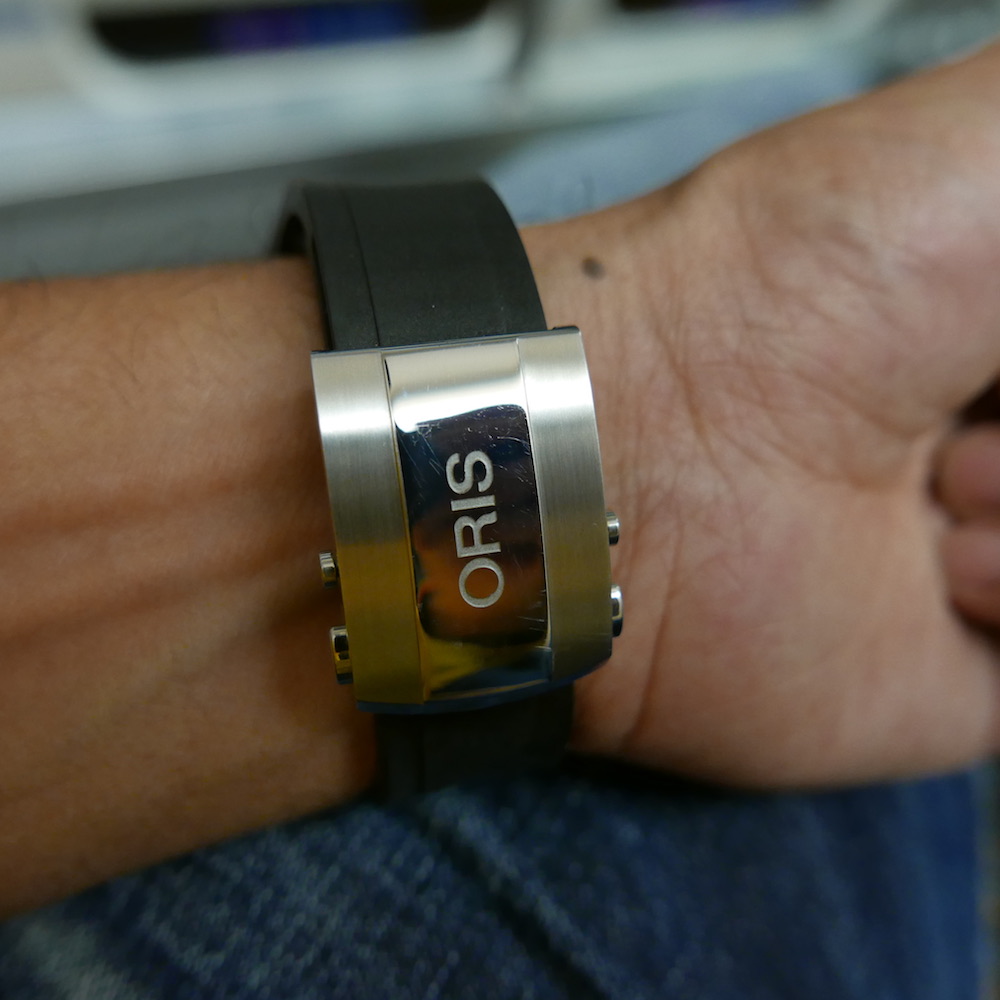
On first look at the Oris Aquis Depth Gauge Chronograph, one clearly sees that this is serious diving gear designed for professional divers. Its massive 48.5mm-diameter size with just over 18.5mm in height make its presence felt from the moment you strap the supple rubber over your wrist. This Oris Aquis Depth Gauge Chronograph comes with a deployant clasp that includes an easy-to-adjust 15mm play, meaning that it would be convenient to get a good fit while diving or if wearing the watch over a wetsuit. Luckily, the water temperature was an incredible 78 degrees Fahrenheit so I actually dove with a “shorty” wetsuit and had the Oris Aquis Depth Gauge Chronograph on my naked left wrist, while I strapped the Sunnto d4i on the right wrist.
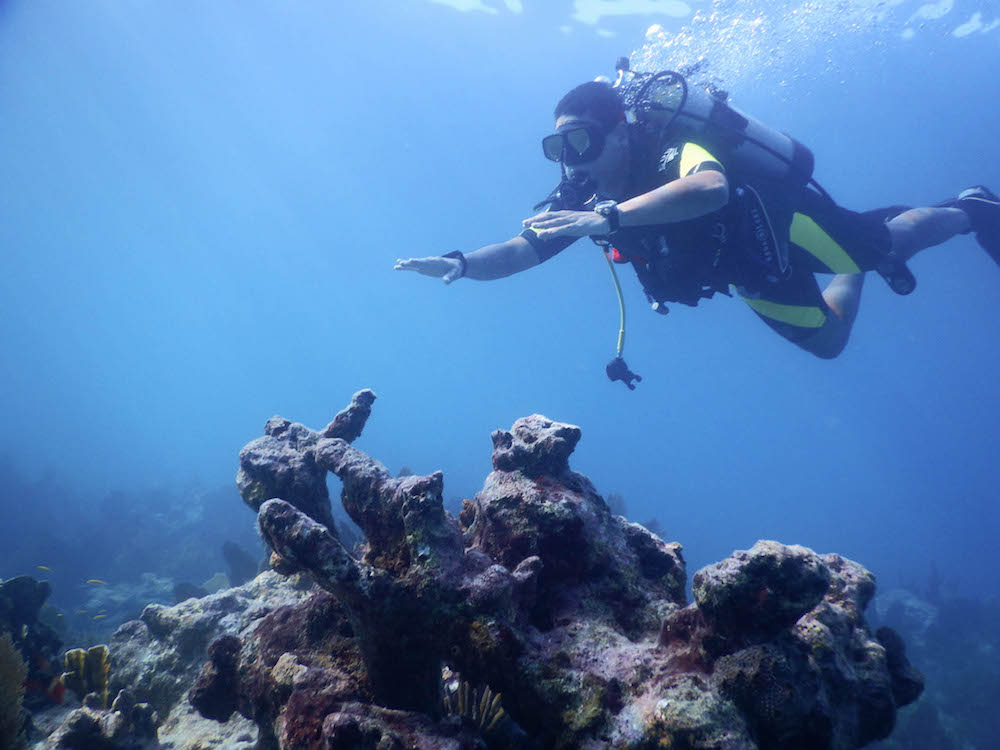
Another important point to make about the fit of the Oris is that, while not a small watch, it actually wears somewhat small on my 6.5-inch wrist. Similar to many Panerai watches, the primary reason for the easy fit is due to the short lugs, which means that while the case feels like a hockey puck on the wrist, the short lugs mean that the strap did not overpower my wrist but simply wrapped around it perfectly. Though I did need to use the last strap hole to make it fit tightly – allowing me to use the micro-adjust mechanism to give some relief during my time using the watch in sunny and hot South Beach.
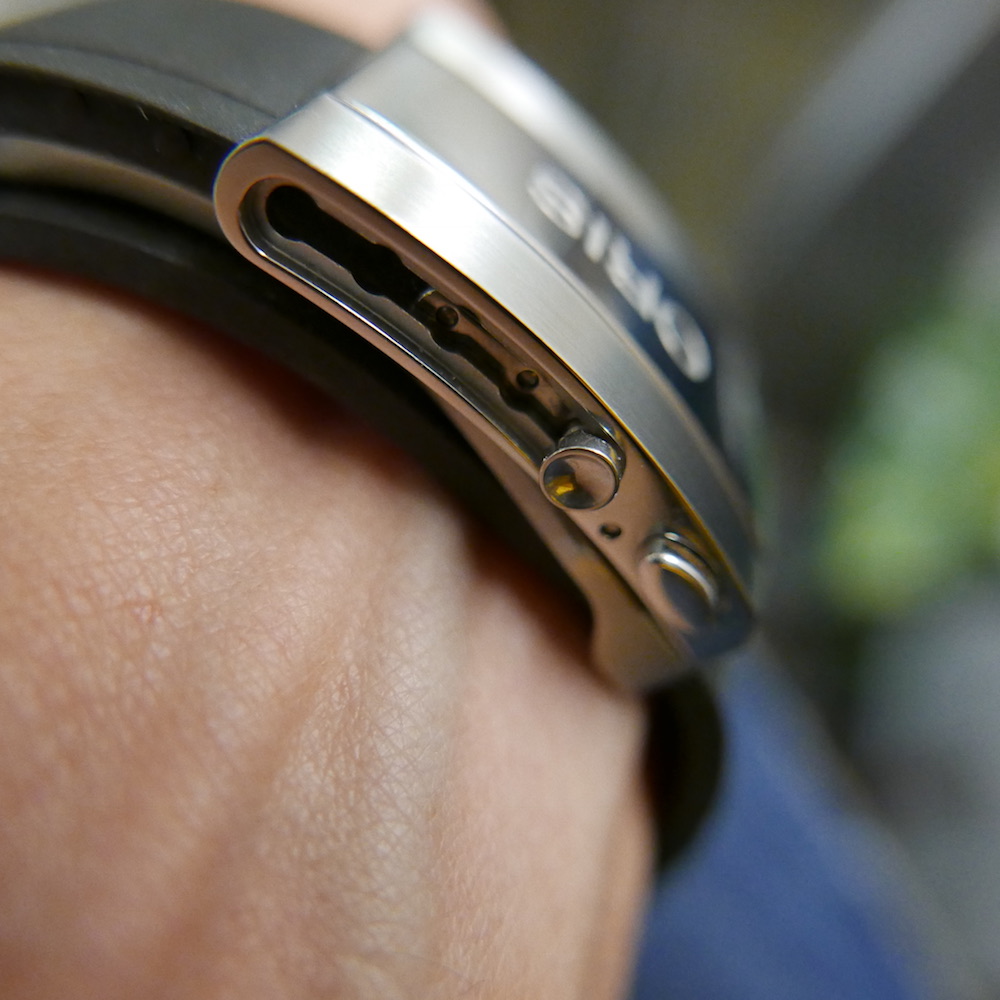
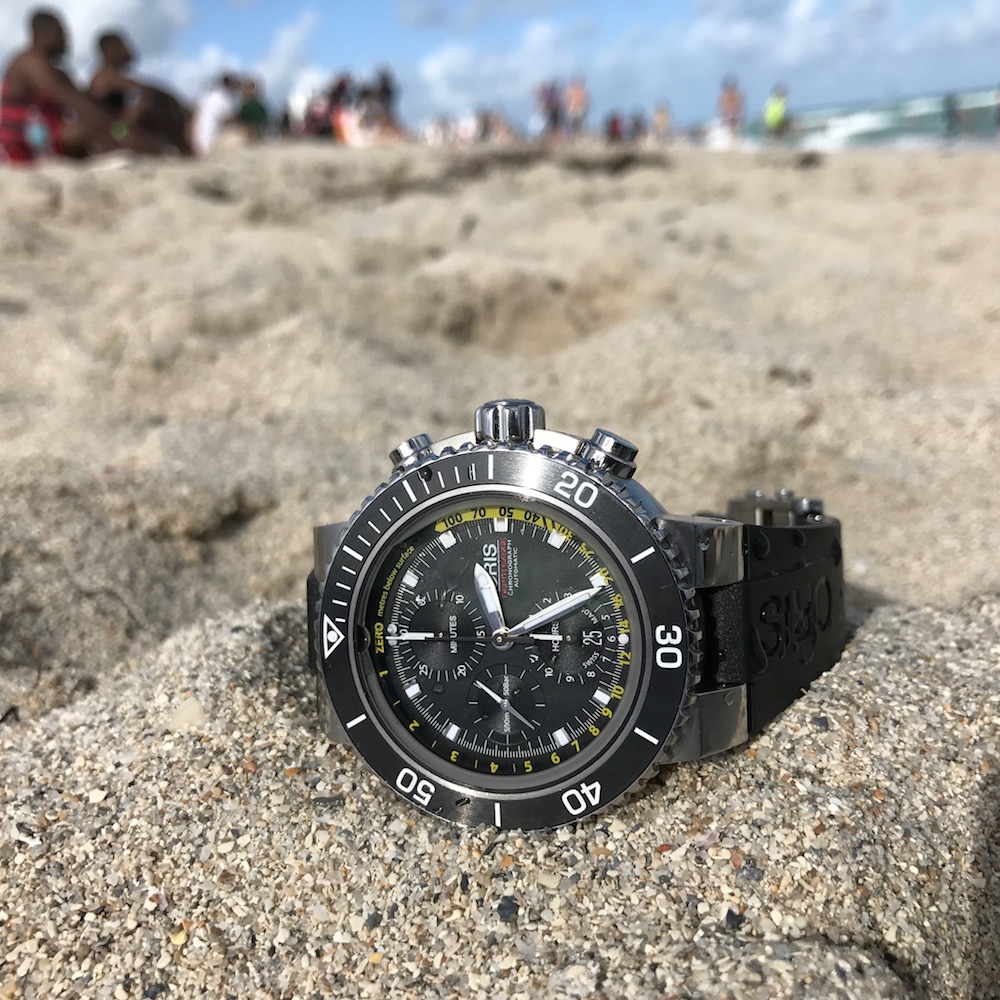
While the Oris Aquis Depth Gauge Chronograph’s strong presence made it a great companion during my days in South Beach enjoying the sun and the views of beautiful, fit girls, parading the beach in their bikinis, the watch really shines underwater. This is first and foremost a serious diving watch before it is a desk diver, in my opinion. The first time diving with it, I was blown away. Outside of the water, the dial appears a bit busy, not only due to the 12-hour chronograph subregister at 6 o’clock and the 30-minute counter at 12, but also because it includes at 9 o’clock a running seconds and at 6 also a date register. Legible, but yes, also busy.
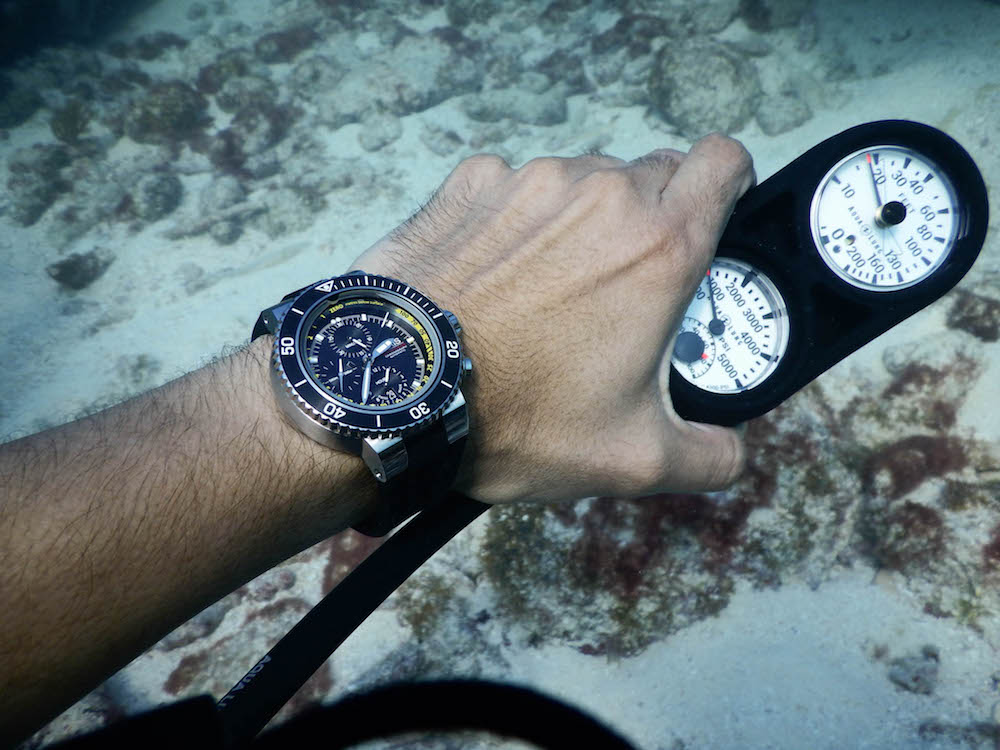
And if that palette of markers was not enough, around the periphery of the dial are additional markers for the patented depth gauge. You see, Oris has created a clever depth gauge mechanism using the physics principle of the Boyle-Mariotte law that dictates that the pressure and the volume of a gas will be inversely proportional. As pressure increases, the volume will decrease proportionately. This is achieved by placing air using a proprietary polymer that is placed in a cavity around the dial and creating a hole at 12 o’clock. As you dive, water enters the cavity which then puts pressure on the air the white polymer which shrinks and indicates the current depth. This was first done on the Oris Aquis Depth Gauge watch, and the brand later added to the collection this Oris Aquis Depth Gauge Chronograph.
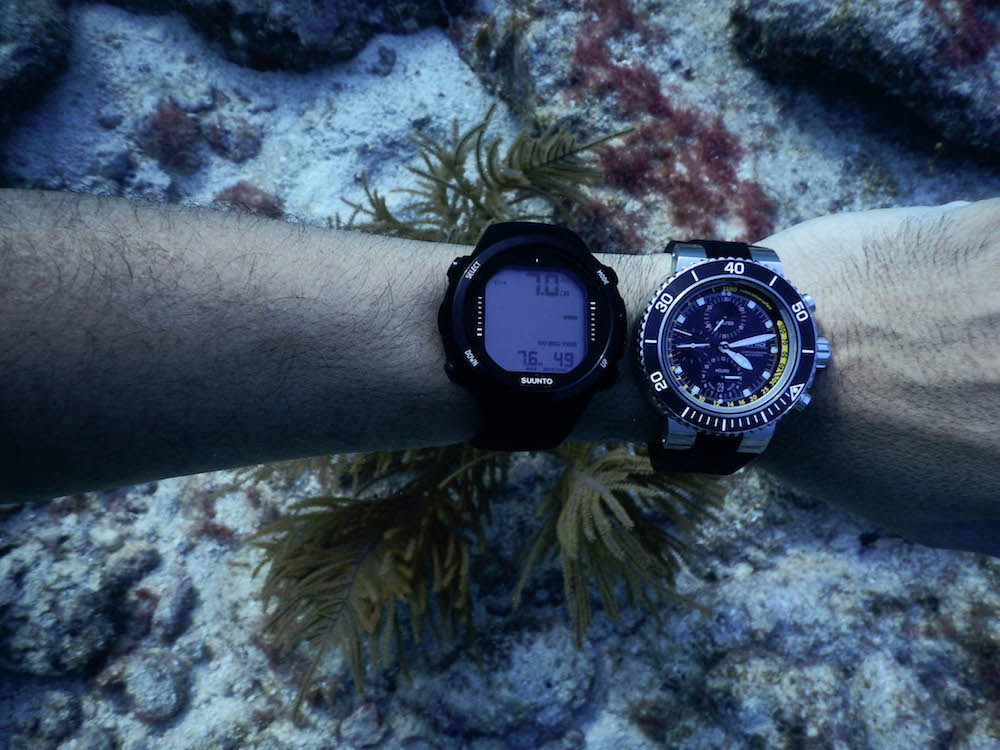
The whole depth gauge system works brilliantly from the moment you start going underwater with the watch. I have various pictures proving this and showing the current depth indication next to the Suunto. They never deviated more than half a meter. Most of the time, I found the difference was due to the fact that the Suunto digital depth gauge was somewhat instantaneous whereas the Oris depth gauge indication took a bit more time. Generally, I would say I never doubted the value the Oris Aquis Depth Gauge Chronograph indicated as it was always dead on.
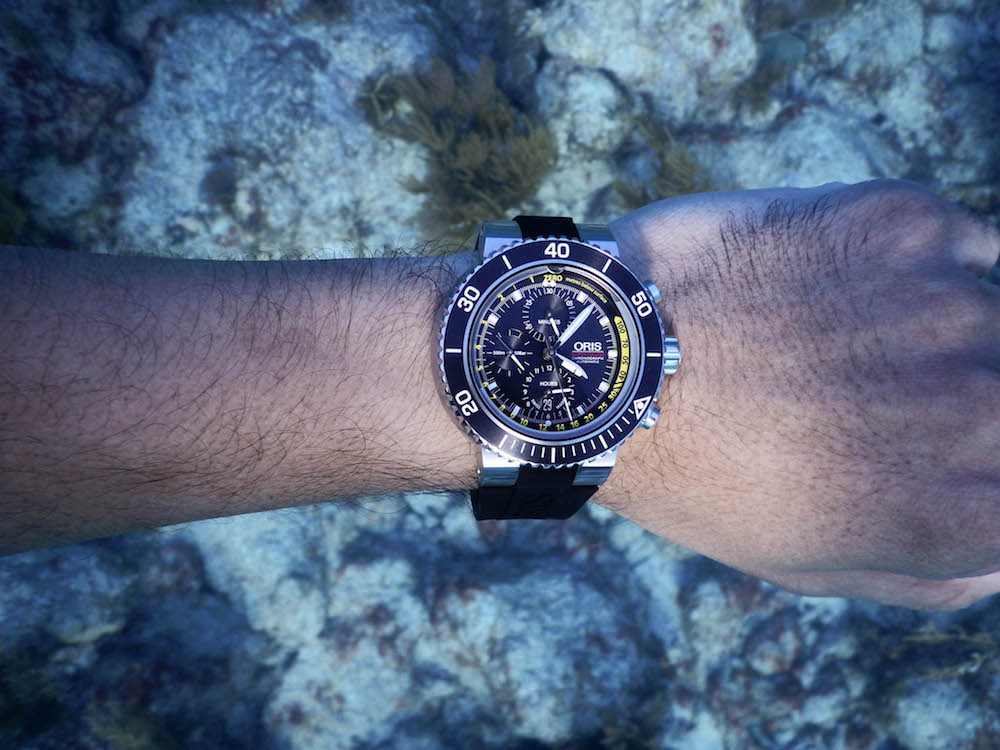
Perhaps the thing that most amazed me was how legible the watch was at all depths. The busy dial was actually much clearer than the Suunto at depths of 5 and 10 meters. I really did not expect this, as I have experienced various mechanical dive watches falling a bit short on visibility. However, the visibility here was, somehow, just outstanding. See the pictures and you can judge for yourself. I think the reason for this is the thick sapphire crystal that Oris uses for the watch. So again, high marks under the water that you might not be able to guess if you only saw the watch above water.
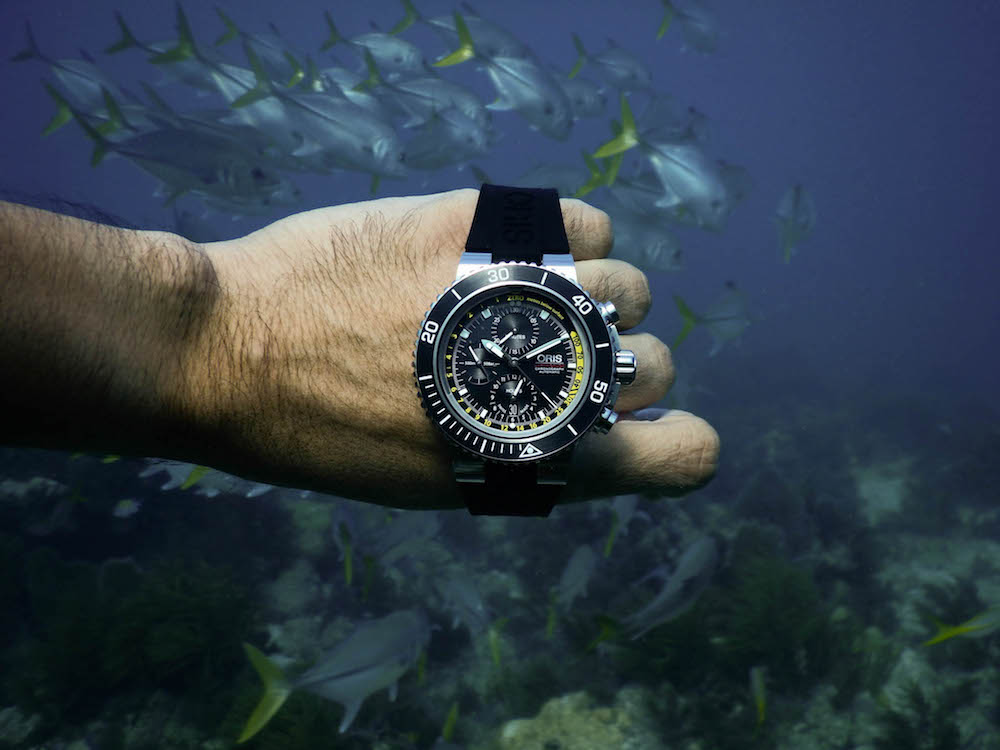
My theory is that that the thick crystal creates a kind of magnifying effect underwater and the black dial with white markers are slightly accentuated so their visibility is increased to a point where I used it more than the Suunto to know my depth. I expected this to be the case for the dive time since it’s usually easier to glance at the minutes hand and read the current dive time on the rotating bezel. That said, at depth, the total dive time from the running chronograph and current dive time were brilliantly usable underwater for me.
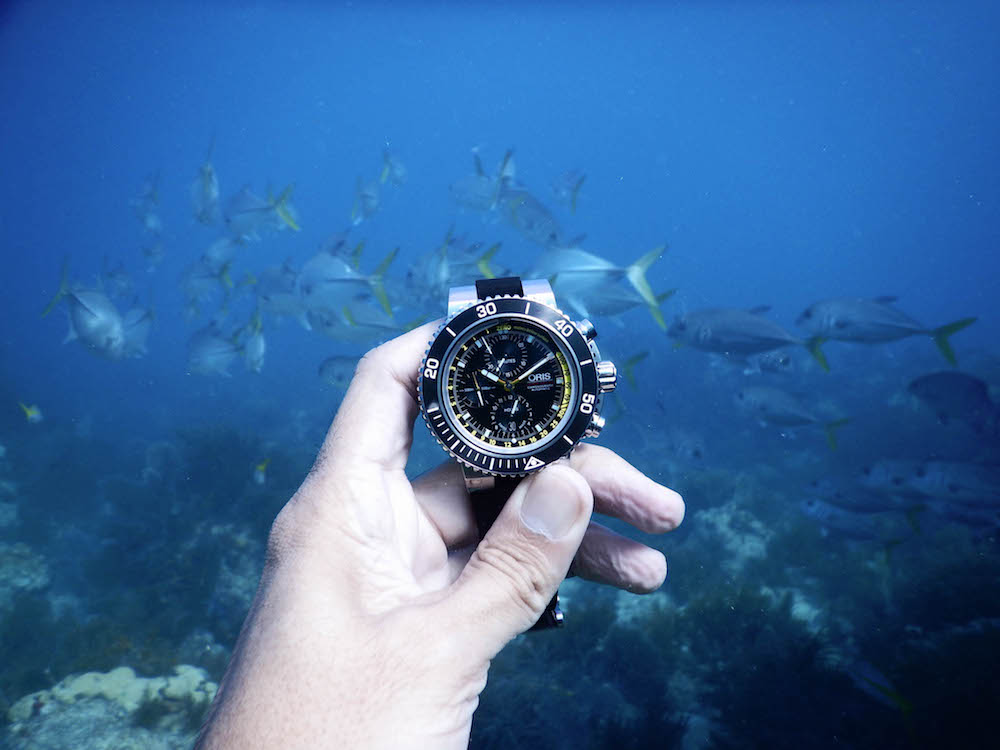
While the depth gauge and visibility of the dial blew me away, I have two small complaints that if addressed would make this the absolute best dive watch I’ve ever dived with. First, like all watches that use a plain sapphire crystal (including the Suunto), at certain angles, the dial becomes a mirror. This is due to the physics of being surrounded by sea water whose refractive index is different than air (in the dial) or of the crystal itself. Not sure how to fix that one unless the fundamentals of the watch itself are changed…
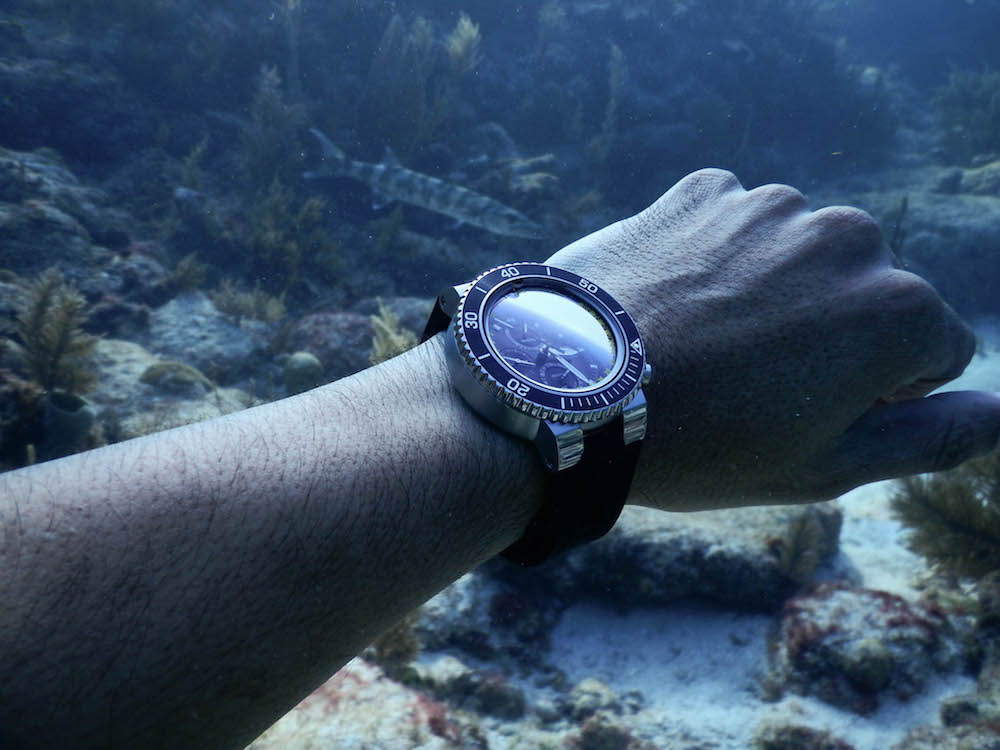
For example, I hear that the Sinn UX and a few other clever liquid-infused watches solve this common problem with dive watches given how they are constructed – but this currently doesn’t work for mechanical watches. With that said, a simple solution for the mirror effect is just to rotate your wrist so that the dial is more parallel to your mask’s glass and the clarity of the dial just shines. So it’s really not that big of a deal even though I’ve been complaining about it.
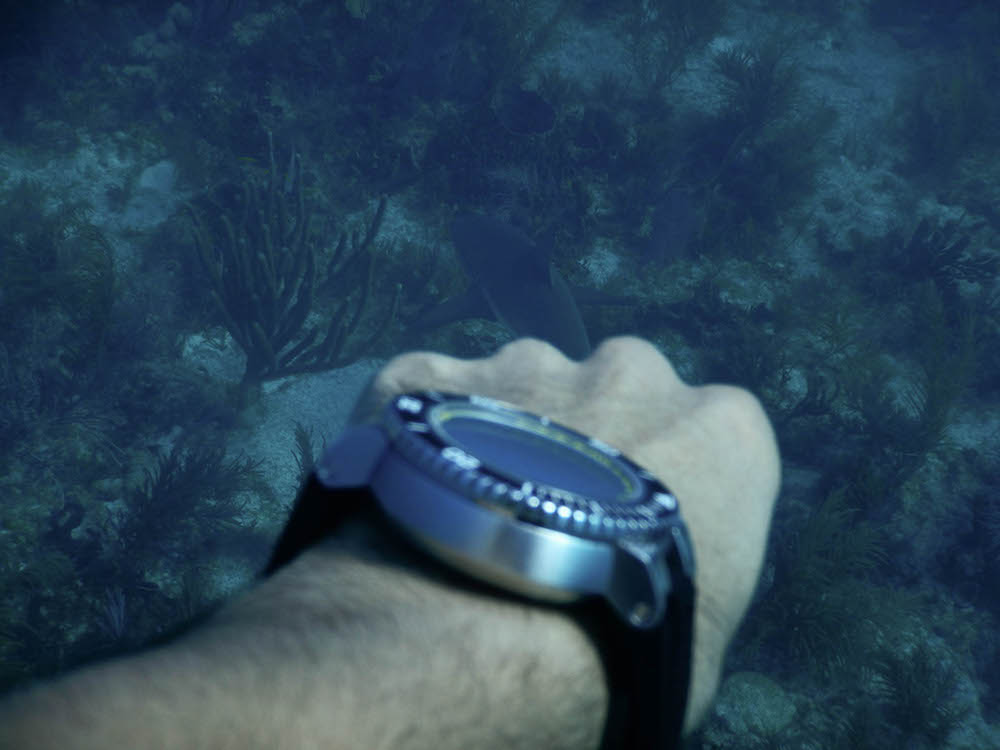
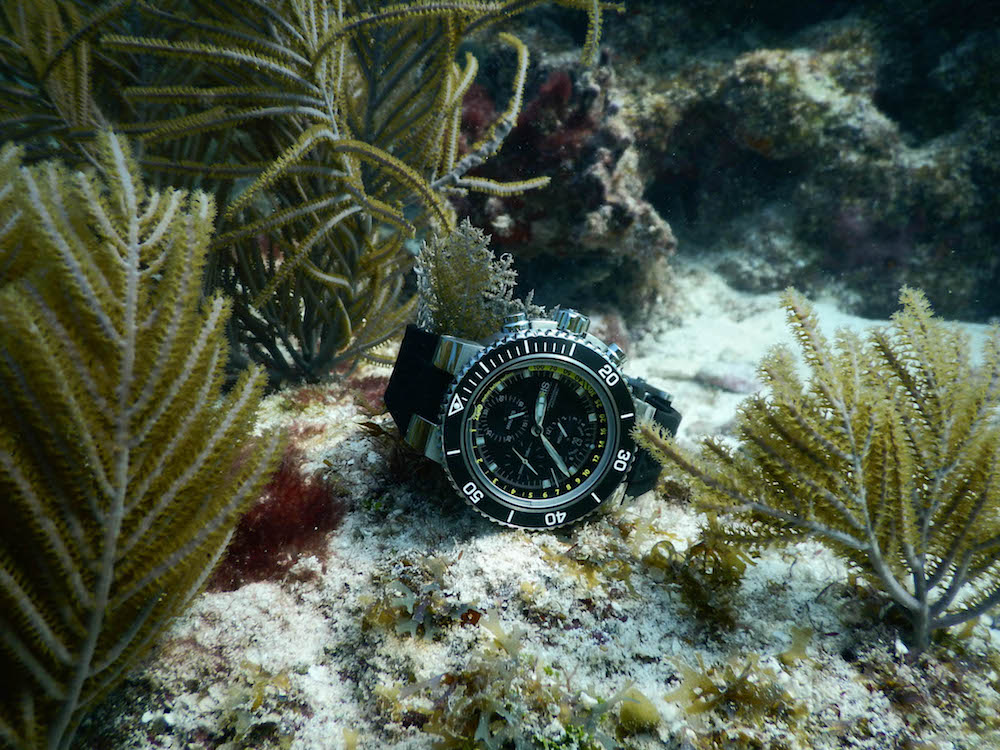
The other issue with the watch, unlike the one above, is one I did not expect. Since, as I mentioned, the water temperature was actually warmer than the surface temperature, I did not dive with gloves or a long-sleeved wetsuit. That meant wrapping the watch around my naked wrist, and it also meant using my naked fingers to operate the bezel. When not diving, the ceramic bezel worked perfectly. The clicks for every half-minute felt great, and there was very little play. It was easy to set it to the minutes as I started diving or to return the 12 o’clock pearl to the top.

